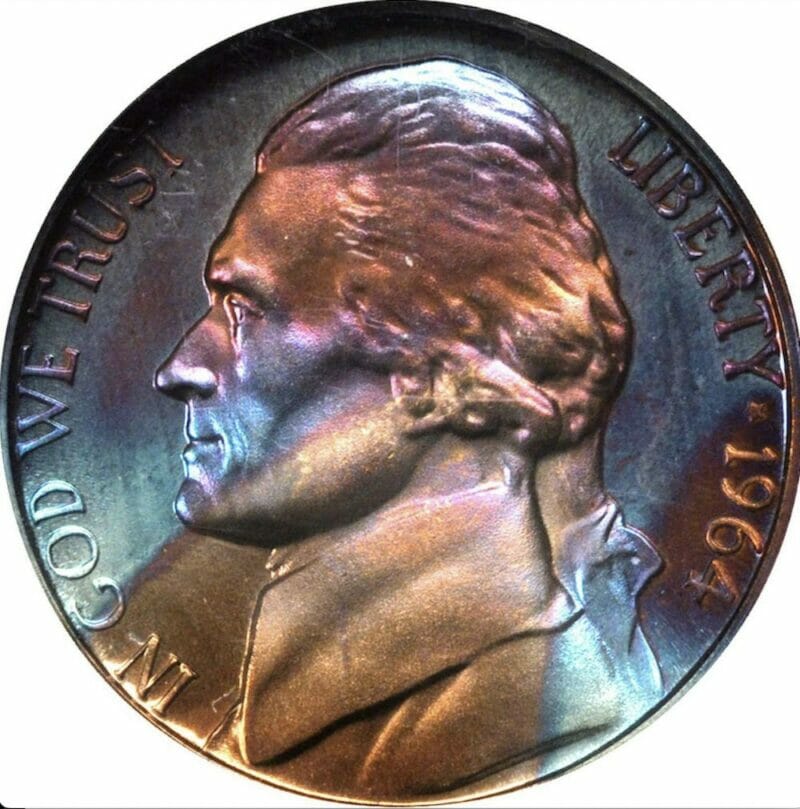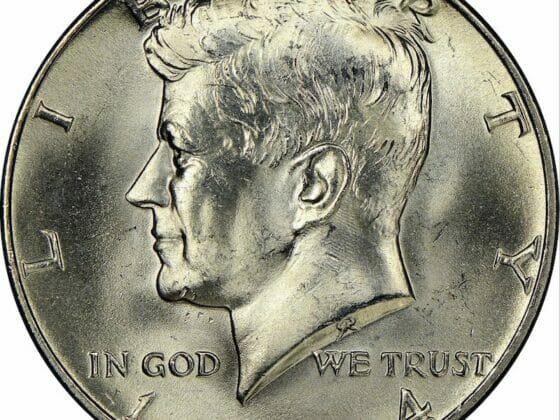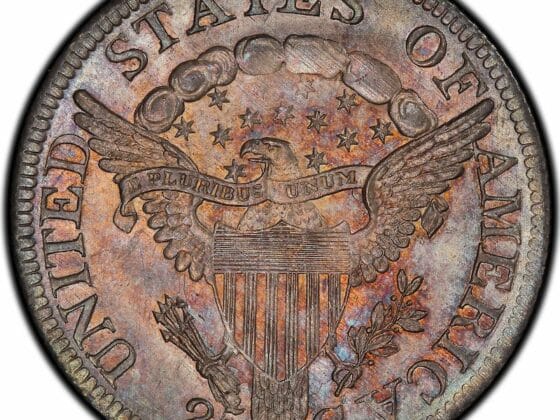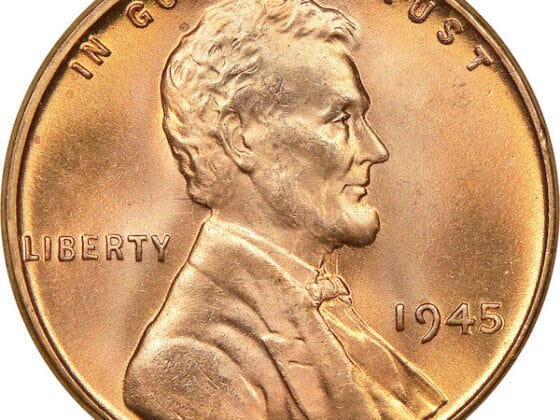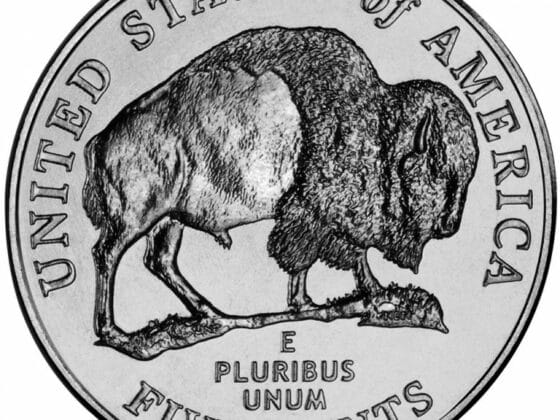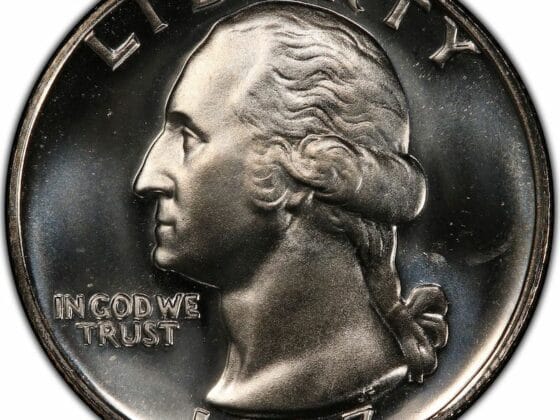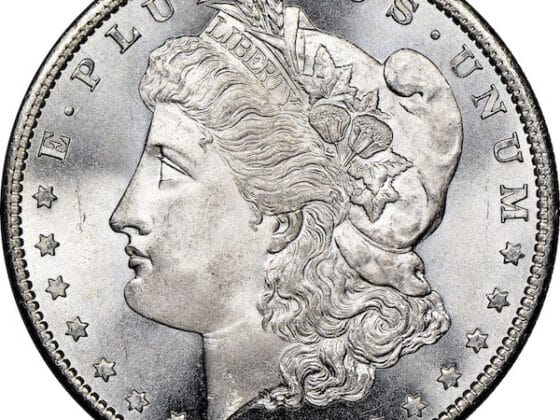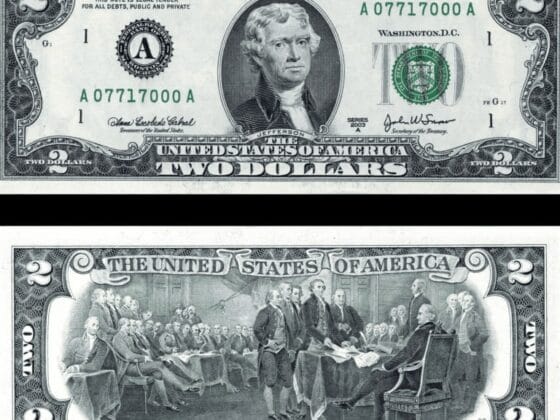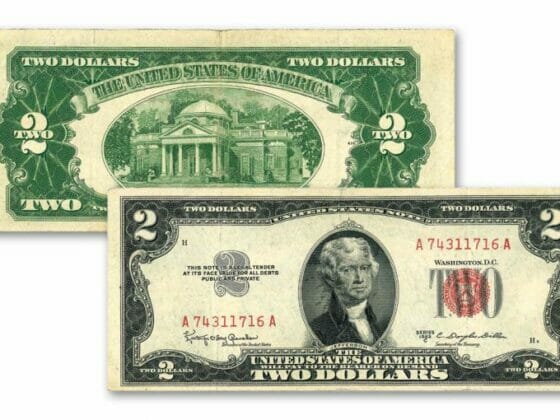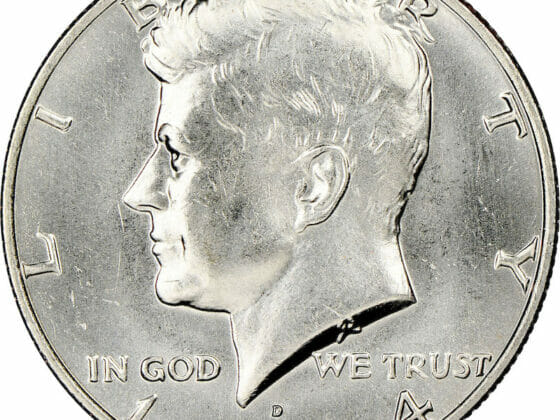The 1964 Nickel holds a unique place in American numismatics. This coin, part of the renowned Jefferson Nickel series, marked a significant transition in coinage history. Its issue began in 1938, replacing the Buffalo Nickel, coined during World War II.
That’s also after Felix O. Schlag’s design won the nationwide contest to honor Thomas Jefferson, U.S.’s third president (1801-1809). This design began the production of a new five-cent coin that is still in use to date. It’s the longest-serving series of valuable nickels or coinage in the U.S.
Some 1964 nickels were produced in 1965 and well into 1966. This date freeze led to the highest number of all nickels ever minted. In fact, over 2 billion 1964-D and 1964 nickels were minted using a mixture of silver, copper, and manganese.
While the 1964-dated pennies are common, over 150 recognized varieties exist today, including 2004-2005 strikes and designs. These rarities drive up the market value of the coin. And if you have one or a few, you’re probably wondering their worth. Don’t worry; this guide will delve into the 1964 Nickel’s design, composition, and varying values, including rare error coins.
Table of Contents
The 1964 Nickel Design & Composition
Obverse Side
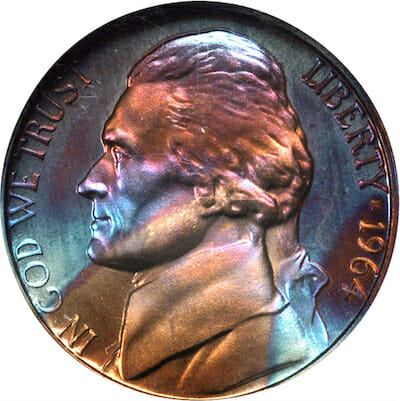
Source: Coin Appraiser
The 1964 Jefferson Nickel’s obverse side proudly showcases a left-facing profile of President Thomas Jefferson, the third president of the United States. Jefferson’s portrait is at the center of the coin, with his head almost in contact with the penny’s upper margin and the left shoulder touching the lower edge.
The phrase “IN GOD WE TRUST” runs clockwise from Jefferson’s chest to his upper hairline along the left margin. Behind him is the word “LIBERTY” and the coin’s mint date (1964), separated by a five-point star, also running clockwise along the right margin. This Felix Schlag’s classic design, originally featured in 1938, remained unchanged for its final year.
Obverse Side
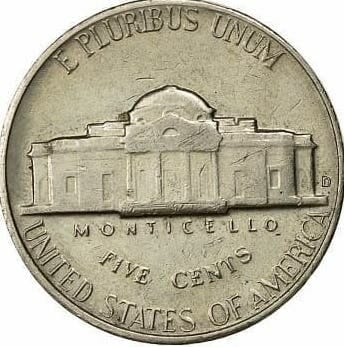
On the reverse side, you’ll find an image of Monticello, Thomas Jefferson’s neoclassical stately home in Charlottesville, Virginia. President Jefferson built his home using architectural designs from the Italian Renaissance. This architectural masterpiece is a fitting tribute to one of America’s Founding Fathers. It occupies the middle of the obverse face with a straight line of text dubbed “MONTICELLO” below it.
On the upper margin, you’ll see a Latin phrase “E PLURIBUS UNUM,” which stands for “one out of many, one,” running clockwise. Watch this YouTube video to learn more about the phrase:
The penny’s denomination, FIVE CENTS, creates a curve beneath the word “MONTICELLO.” Another inscription is “UNITED STATES OF AMERICA” below the penny’s face value and runs clockwise along the lower margin. Note that all Jefferson nickels didn’t bear Schlag’s initials until 1966.
The 1964 Nickel Composition & Dimensions
Unlike earlier versions, the 1964 Jefferson Nickel underwent a significant change in its composition. The nickels’ composition was initially similar to the 1866 denomination, containing 75% copper and 25% nickel.
However, due to a rising demand for nickel during World War II (1942-1945), the U.S. Mint changed the 1964 Jefferson Nickel to a new composition: 56% copper, 35% silver, and 9% manganese. The aim was to preserve the copper stock for the war. Silver was scrapped after the war, i.e., from 1946 to today, leaving the nickel coins with their original composition. These circulated five-cent coins weigh 5 grams and have a diameter of 21.2 millimeters.
Is the 1964 Nickel Silver?
No. While the modern 1964 Jefferson Nickel is a composite metal coin with a silver appearance, it has no silver content. It mainly contains 75% copper and 25% nickel. However, the 1942-1945 variations contained silver (56% copper, 35% silver, and 9% manganese).
1964 Nickel Silver Content
As stated above, the 1964 Jefferson Nickel content has changed since its coinage in 1938. The table below shows the key changes in the Jefferson Nickels’ silver content throughout their history:
| Years | 1938 to 1942 | 1942 to 1945 | 1946 to 1964 | 1965 to Today |
| Composition | 75% copper 25% nickel | 56% copper 35% silver 9% manganese | 75% copper 25% nickel | 75% copper 25% nickel |
| Mint mark’s shape and location | Back: On the right-hand side of the Monticello building | Back: Larger size and on top of the Monticello estate | Back: On the right-hand side of the Monticello building | Anverse: At the back side of Jefferson’s neck |
The 1964 Nickel Value
How Much is a 1964 Nickel Worth?
The NCG Price Guide estimates the value of Mint State 1964 Jefferson Nickels to be between 15 cents and $500, whereas Proof Coins are worth more in auctions. Nickels with a 6FS or 5FS designation are worth between $20 and $15,000. The exact value of your nickels can vary widely based on factors such as their condition, rarity, and any associated errors.
The 1964 Nickel Mintage, Series, and Associated Value
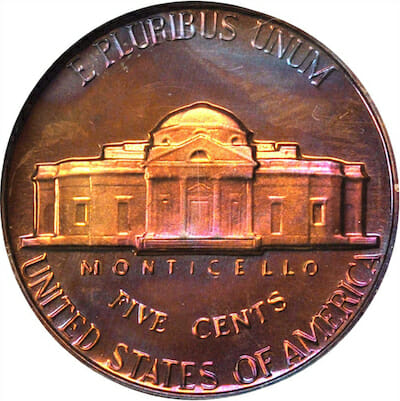
Source: Coin Appraiser
The Jefferson Nickel has been produced and struck for circulation at multiple U.S. Mint facilities every year since their debut in 1938. These mainly include Philadelphia and Denver Mints; as such, mintages have varied widely.
Over 50 billion 1964 Jefferson Nickels have been crafted. The 1964 D Jefferson Nickel series (created at the Denver Mint) has the highest mintage of 1,787,297,160. Of these, only 455,821,840 were produced in 1964, with the remaining (1,331,475,320) struck in 1965.
The Philadelphia Mint produced 1,028,622,762 coins, with 3,950,762 minted in Proof quality and 1,024,672,000 for circulation. This coinage wasn’t minted at the San Francisco Mint facility.
1964 D Nickel
Nickels minted in Denver bear the “D” mint mark, signifying their origin. Understanding the mint marks is crucial for determining your nickel’s value.
1964 D Nickel Value
The 1964 D Nickel, while common, holds a distinct place in the series. Its value can range between 15 cents and $500. Proof-like nickels are more valuable in auctions. As for the 6FS and 5FS designations, they are currently worth between $20 and $4,250.
1964 SMS Nickel
The Special Mint Set (SMS) coins were produced in 1964 with more care and attention to detail. This makes them relatively scarce yet rarer than regular circulation strikes. They hold a higher value of about $8,625 to $32,900 as they’re more desirable to collectors.
1964 Nickel No Mint Mark
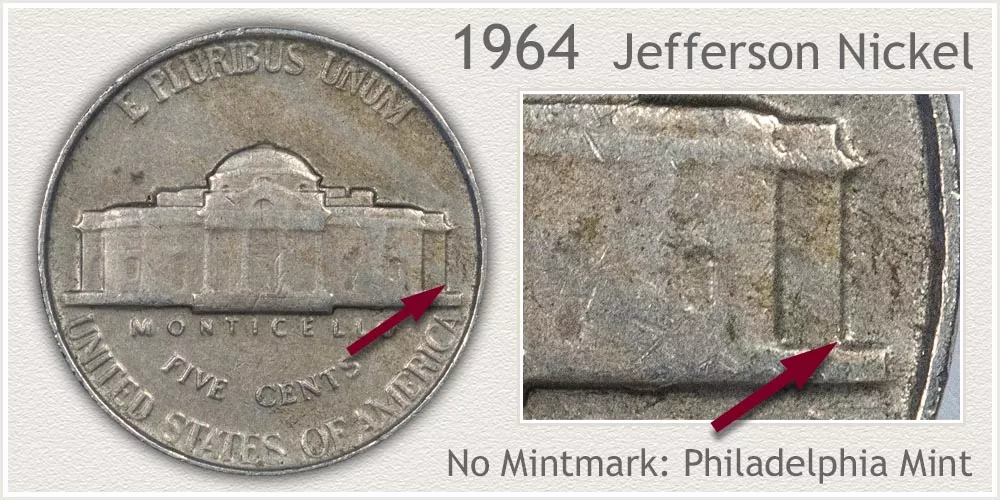
Nickels without a mint mark were struck at the Philadelphia Mint. They are common and valued primarily based on their condition, like the 1964 D Nickels.
1964 Nickel No Mint Mark Value
In circulated condition, the value of a 1964 Nickel without a mint mark closely mirrors that of the Denver Mint and Philadelphia Mint issues. This rare nickel can be worth about $225 to $275 or even $8,750 in MS65.
1964 Silver Nickel Value
The 1964 Silver Nickel transitioned away from silver content. While historically significant, its collector value is typically in line with standard 1964 Nickels, about 5 cents.
1964 Nickel Value Chart (Mintage, Grade, Circulation & Errors)
| Date | Mintage | Coin’s Condition | ||||
| Good | Fine | Extremely Fine | Mint State | Uncirculated | ||
| 1964 D | 1,787,297,160 | $0.05 | $0.05 | $0.05 | $0.39 | $0.63 |
| 1964 | 1,024,672,000 | $0.05 | $0.05 | $0.05 | $0.39 | $8.91 |
| Proof (PR65) | 3,950,762 | – | – | – | – | $3.22 |
1964 Nickel Value Error List and Associated Values
The 1964 Jefferson Nickel, like many coins, can exhibit various errors during the minting process, significantly affecting its value. Here is a list of common errors and their associated values:
1964 Nickel “In Cod We Trust Error”
It’s a common error that involves a misprint or double strike error in the inscription “In God We Trust.” This may result in a re-punched effect and read as “In Cod We Trust.” Such errors can be rare and are sought after by collectors, often fetching substantial prices.
1964 D Nickel Error
Errors specific to the Denver Mint strike of 1964 Nickels include die cracks, off-center strikes, and double die errors. They can add significant value to these coins depending on their severity.
Common 1964 Nickel Errors
Die Cracks
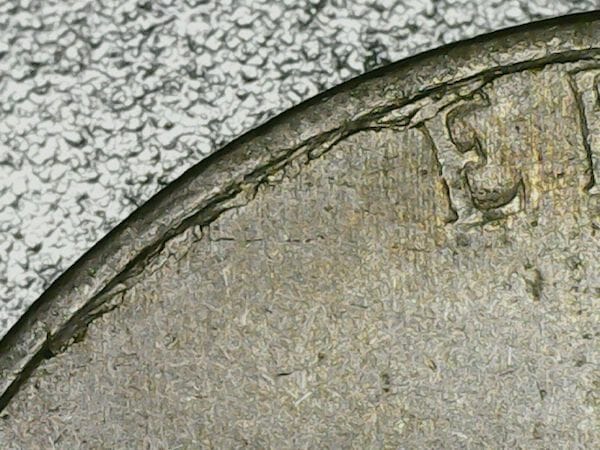
Small cracks on the die can lead to raised lines on the struck coins. These error coins fetch about $7 on eBay.
Clipped Planchets
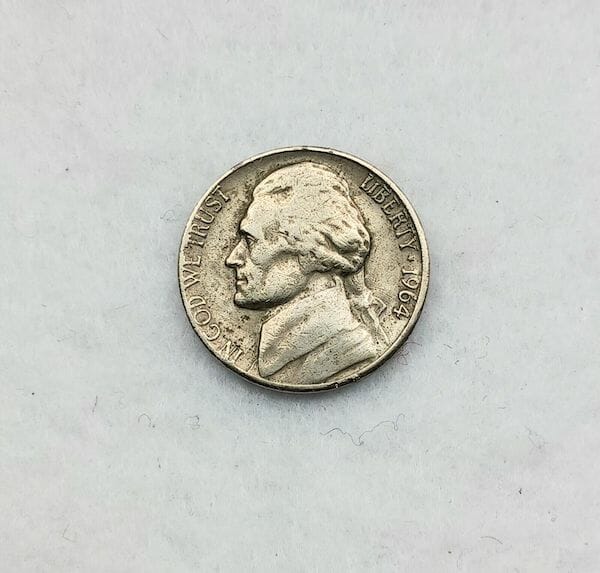
These occur when the metal strip used to create the planchets is misfed, leading to a coin missing a section. The size of the clip impacts the value, which may be around $30 on platforms like eBay.
Off-Center Strikes

These are self-explanatory; the coin was not struck precisely in the center by up to 90%, causing one part of the design to be missing or weak. This off-centering error on a silver planchet can fetch over $1,000.
Double Die Errors
Details on the coin appear doubled due to misalignment or slight rotation between strikes. The prominence of the doubling can make nickel coins worth $250 on average if uncirculated.
Over-Mintmarks
It occurs when one mintmark is struck over another. This was more common in earlier years but can occasionally happen. The rarity of the combination affects value such that if the penny is high grade, its price can rise to about $2,800.
Cud Errors
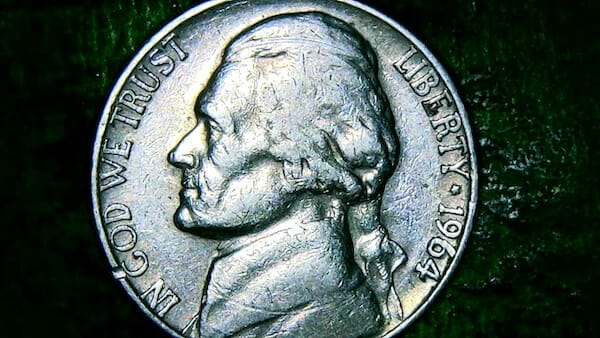
These errors occur when large lumps or disfigurations on the coin where a piece of the die has broken away. The size and location of the cud influence value but generally make the coin valuable, fetching up to $ 1,000.
Broad strikes
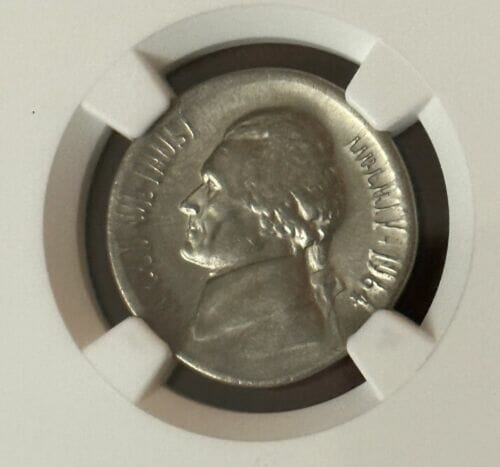
These errors happen when a coin is struck without the collar that holds it in place, resulting in a flattened, widened appearance. You can sell Nickel coins with this error for $90 apiece.
Blank Planchet
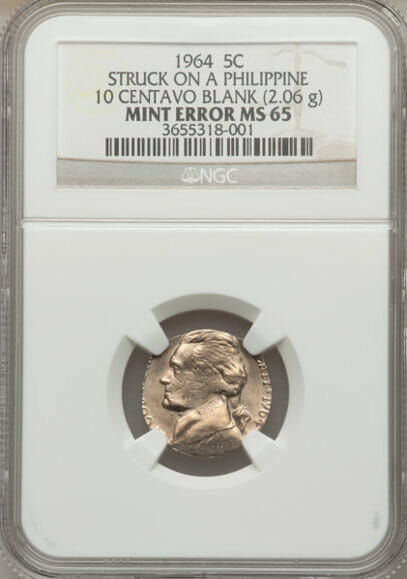
A coin that missed the striking process and has no design is considered an error. Its value is tied to rarity, about $0.05 or more in average grades.
Transitional Errors
Coins struck on planchets intended for previous or future years, though less common in nickels, can command higher prices.
Wrong Planchet Errors
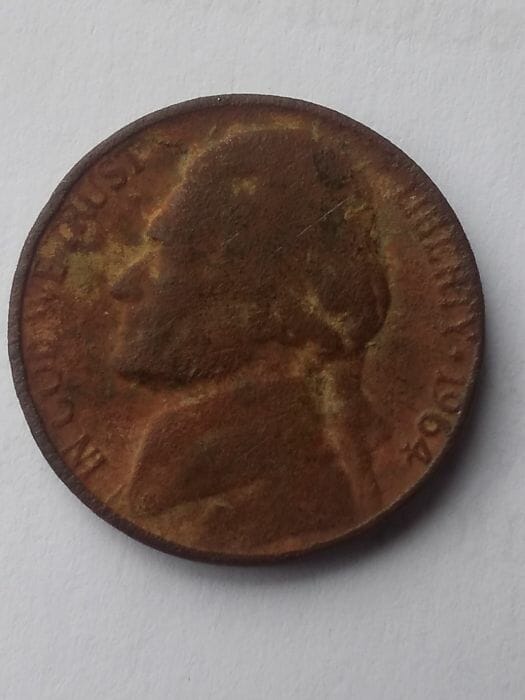
These occur when a nickel is struck on a planchet intended for a different coin, making them highly collectible. Such error coins can be worth over $1,000.
Re-punched Mintmarks
Especially in older coins, the mintmark was manually punched onto the die, sometimes more than once, leading to a double image. These multiple, manually-punched mintmarks can increase their appeal among collectors.
Conclusion
The 1964 Jefferson Nickel, with its historical significance and diverse array of errors, remains a fascinating piece of American coinage. Its journey from the wartime Silver Nickel to the copper-nickel composition we know today underscores the evolution of U.S. coinage. Whether you’re a seasoned collector or a novice, understanding the value and nuances of the 1964 Nickel can enhance your appreciation of this iconic coin.

